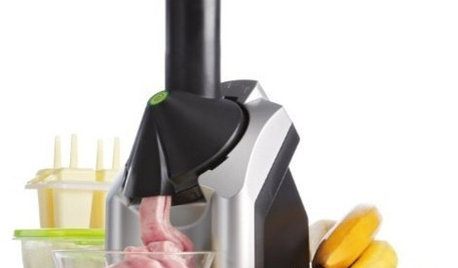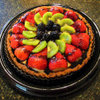Healthy oatmeal breakfast?
elba1
11 years ago
Related Stories

HEALTHY HOME12 Ways to Set Up Your Kitchen for Healthy Eating
Making smart food choices is easier when your kitchen is part of your support team
Full Story
HEALTHY HOME16 Ideas for a Healthy, Feel-Good Home
Making these small tweaks and bigger shifts at home can help you thrive everywhere you go
Full Story
GREEN BUILDINGHealthy Home: Sunrooms and Conservatories
Discover how bringing in natural light can give your life a healthy glow
Full Story
HOME OFFICESHealthy Home: 8 Ways to Add a Standing Desk
Check out these options for doing less sitting during your screen, work and craft time
Full Story
PRODUCT PICKSGuest Picks: An Arsenal of Tools for Healthy Eating
Make cooking and juicing easier whether you follow a vegetarian, vegan, Paleo, primal or other diet
Full Story
LIFESimple Pleasures: A Real Sit-Down Breakfast
Give grab-and-go the heave-ho. To start the day right, treat yourself to a proper breakfast in a cheery spot
Full Story
KITCHEN DESIGN8 Inventive Takes on the Breakfast Bar
From simple wood slabs to sleekly sculpted shapes, breakfast bars expand eating, working and prep space in the kitchen
Full Story
KITCHEN DESIGN12 Breakfast Bars With Coffee Shop Appeal
Give even a small kitchen a sociable vibe by inserting a stylish seating post
Full Story
SHOP HOUZZShop Houzz: A Chic Breakfast Nook
Elegant furniture and fashionable tableware for a sophisticated start to the day
Full Story0

WINDOW TREATMENTSBedroom Window Treatments to Block the Light
Sleep tight with curtains, shades and more designed to keep out bright rays while letting stylishness in
Full Story



User
User
Related Discussions
Healthy Oatmeal Cookie Recipe???
Q
Do you like oatmeal and cream of wheat?
Q
Steel-cut oatmeal
Q
Oatmeal in a rice cooker
Q
elba1Original Author
grainlady_ks
elba1Original Author
grainlady_ks
elba1Original Author
grainlady_ks
elba1Original Author
elba1Original Author
cookie8
gwlolo
Olychick
grainlady_ks
elba1Original Author
grainlady_ks
elba1Original Author
Olychick
gwlolo
EATREALFOOD
elba1Original Author
Islay_Corbel
elba1Original Author
grainlady_ks
grainlady_ks
elba1Original Author